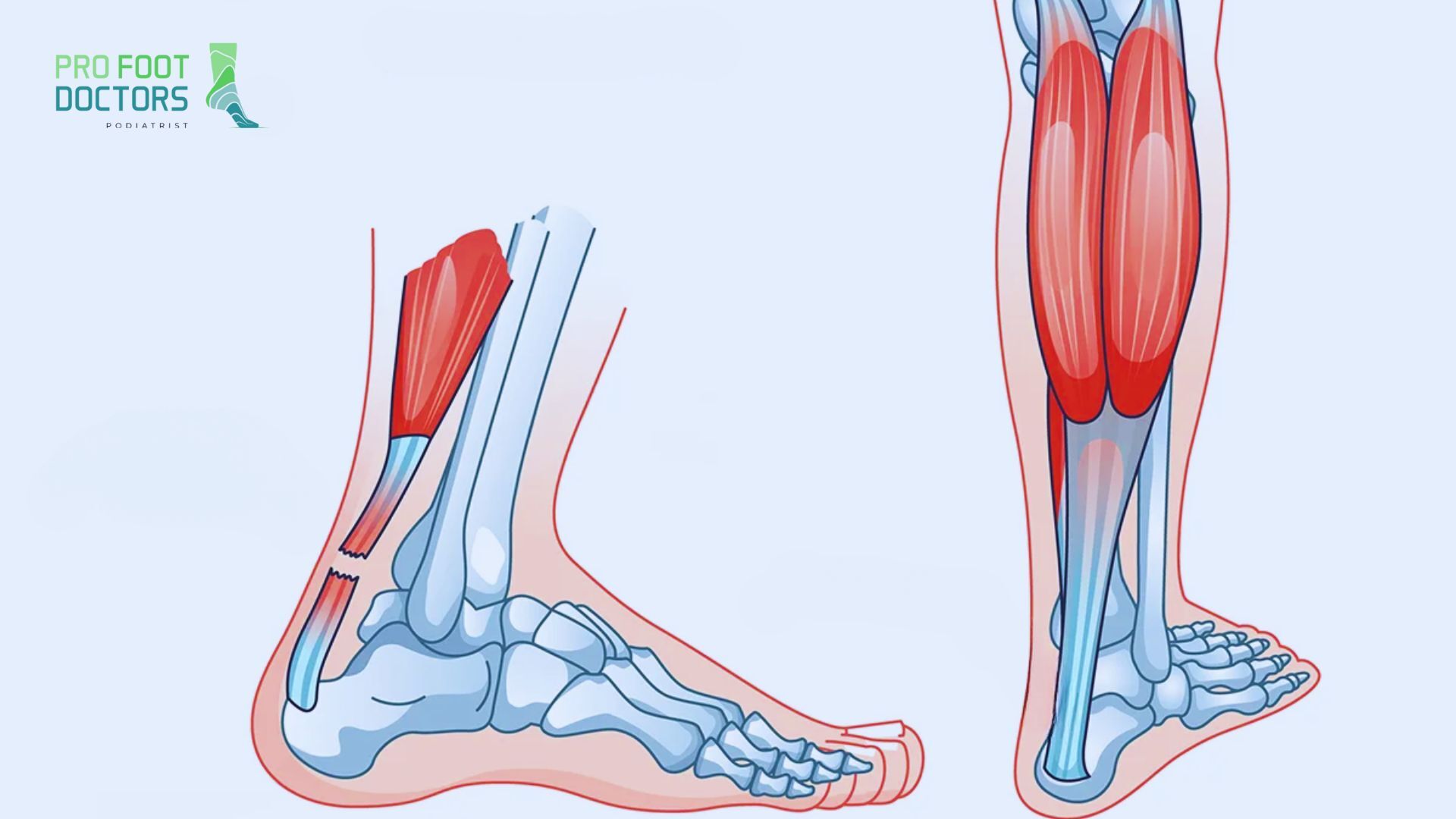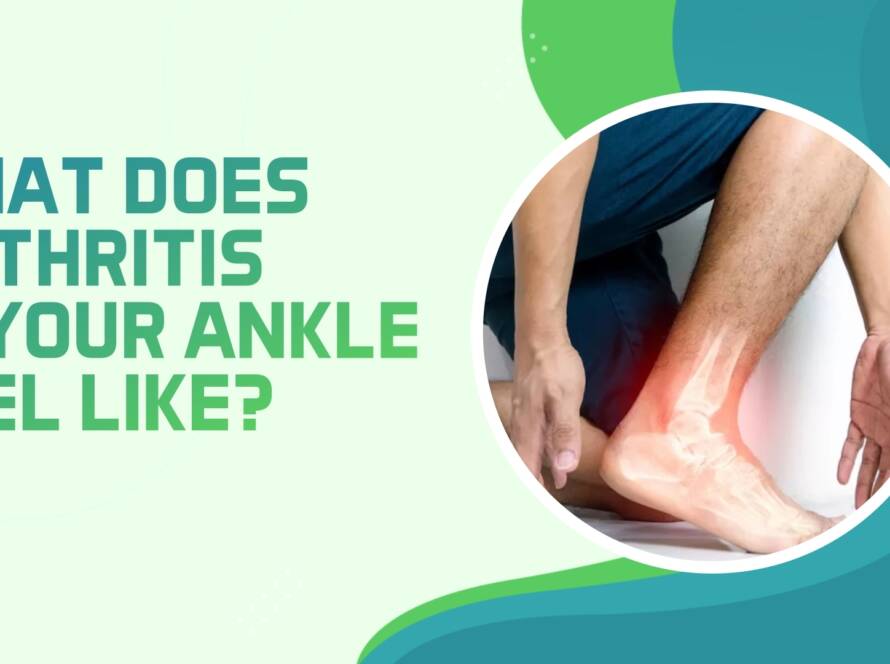The Achilles tendon is the strongest tendon in your body. It connects your calf muscles to your heel bone. Also, this tendon is essential for sprinting, jumping, and walking.
When injured, healing takes time. Recovery depends on the severity of the injury and how well you follow aftercare steps. Let’s break it down.
Healing Timeline for Achilles Tendon Injuries
Recovery time varies. It depends on whether the injury is mild, moderate, or severe.
Minor Strain or Tendinitis
- This happens due to overuse or strain.
- Healing time: 2 to 6 weeks
- Symptoms: Mild pain, stiffness, and swelling.
- Treatment: Rest, ice, stretching, and pain relief.

Partial Tear
- The tendon has some damage but is not completely ruptured.
- Healing time: 4 to 6 months
- Symptoms: Swelling, pain, and difficulty walking.
- Treatment: Immobilization, physical therapy, and slow strengthening.
 Image Credits: Sarricapt
Image Credits: Sarricapt
Full Rupture (Complete Tear)
- The tendon is fully torn. Often needs surgery.
- Healing time: 6 to 12 months
- Symptoms: Sharp pain, swelling, inability to walk properly.
- Treatment: Surgery (in most cases), followed by months of rehab.

Stages of Healing
Healing is a gradual process. Every stage produces essential actions toward regaining Achilles tendon strength along with functionality. Recognition of these stages enables proper expectation management and recovery outcomes.
1. Inflammation Stage (First 1-2 Weeks)
The body activates swelling together with redness and pain during the inflammation stage after an injury occurs. The affected area attracts blood which brings vital nutrients needed for recovery. Bruising and tenderness are common. This period requires complete rest from activities.
The tendon becomes worse when any form of pressure is applied to it. The treatment combination of ice therapy alongside elevation and compression serves to regulate swelling.
2. Repair Stage (2-6 Weeks)
The body initiates tendon fiber reconstruction at the start of the repair stage. After tissue damage the body creates new collagen that reconstructs the wounded area. The swollen and painful tendon weakens during recovery although both conditions slowly heal.
Minimal stretching together with controlled activities help reduce stiffness development. The application of excessive stress during this period can cause the tendon to reinjure itself.
3. Remodeling Stage (6 Weeks – 6 Months)
The newly formed tissue intensifies its strength then adjusts itself according to movement requirements during the remodeling period. The tendon becomes progressively stronger and more flexible because of the adaptive process that develops its resilient properties for next-level exercises.
The main approach in physical therapy includes a combination of controlled stretching along with strengthening activities and balance training. Easier walking function develops while patients can start doing slight physical activities.
4. Full Recovery (6-12 Months)
The tendon reaches its full strength and complete flexibility during this last recovery period. People can start their regular activities step by step as they return to sports activities and more challenging movements. People must continue doing strengthening exercises because these exercises promote tendon health and reduce the likelihood of developing new injuries. Consistent stretching activities help enhance joint flexibility thus decreasing strain possibilities.
Aftercare Tips for Faster Healing
A complete recovery from Achilles tendon injury depends on performing the right post-injury care procedures. Proper treatment steps help healing to progress faster with decreased pain symptoms and fewer complications. Follow this set of advice to achieve a safe recovery of your strength and mobility.
Follow the R.I.C.E. Method (First Few Weeks)
- Rest: Avoid walking too much. Use crutches if needed.
- Ice: Ice therapy should be used with cold packs applied for 15 to 20 minutes throughout the day.
- Compression: Use a wrap or brace to reduce swelling.
- Elevation: Keep your foot raised to minimize swelling.
Wear the Right Support
- A brace, boot, or cast may be needed.
- These protect the tendon and prevent strain.
- Use supportive shoes when walking again.
Gentle Stretching and Strength Exercises
- Start with light movements once the pain decreases.
- Stretch the calf muscles gently.
- Avoid sudden movements or high-impact activities.
Stay Active but Avoid High-Impact Activities
- Swimming or cycling can help maintain fitness.
- Avoid running, jumping, or heavy lifting.
Eat Nutrient-Rich Foods
- Protein helps rebuild tissues.
- Vitamin C and collagen boost healing.
- Calcium and magnesium support tendon strength.
Pain Relief
- Over-the-counter painkillers like ibuprofen can help.
- Anti-inflammatory creams may provide local relief.
- Massage therapy can improve blood flow.
When to See a Doctor?
See a doctor if your pain worsens instead of improving. Seek urgent care if you hear a pop and struggle to walk. Persistent swelling, bruising, or weakness in the foot are signs of serious injury. Delaying treatment can worsen the condition.
At Pro Foot Doctors, we specialize in diagnosing and treating Achilles tendon injuries with expert care. Our experienced podiatrists use advanced techniques to speed up healing and prevent future problems.
Preventing Achilles Tendon Injuries in the Future
Preventing Achilles tendon injuries is easier than treating them. Simple daily habits can keep your tendon strong, flexible, and resistant to strain.
1. Warm Up Properly
Warming up properly prepares the Achilles tendon for movement. Stretching before exercise improves flexibility and reduces strain. Focus on calf and ankle stretches to enhance mobility.
2. Wear Proper Footwear
Wearing proper footwear provides essential support and cushioning. Supportive shoes with good arch support help absorb impact and reduce strain on the Achilles tendon.
3. Gradually Increase Activity Levels
Gradually increasing activity levels prevents overuse injuries. A sudden jump in exercise intensity puts excessive stress on the Achilles tendon.
4. Strengthen the Calf Muscles
Strengthening the calf muscles helps absorb shock and protect the tendon. Heel raises, resistance band exercises, and eccentric calf workouts build strength and improve tendon durability.
Final Thoughts
Achilles tendon injuries take time to heal. Recovery can range from weeks to a year, depending on severity.
Proper care, patience, and rehabilitation are key. Take small steps, follow medical advice, and focus on strengthening your tendon.
At Pro Foot Doctors, we specialize in expert foot and ankle care. Our team provides personalized treatment to help you heal faster and prevent future injuries. Don’t let Achilles tendon pain slow you down.
Schedule an appointment today and regain pain-free mobility!
Frequently Asked Questions
What is the fastest way to heal an Achilles tendon?
The fastest way to heal an Achilles tendon is through rest, physical therapy, and proper support. Severe cases may require surgery.
Can I walk on a torn Achilles tendon?
Walking on a torn Achilles tendon is difficult and not recommended. It can worsen the injury and delay healing.
What happens if a torn tendon goes untreated?
If a torn tendon goes untreated, it may lead to chronic pain, weakness, and permanent mobility issues. Surgery might be needed later.


